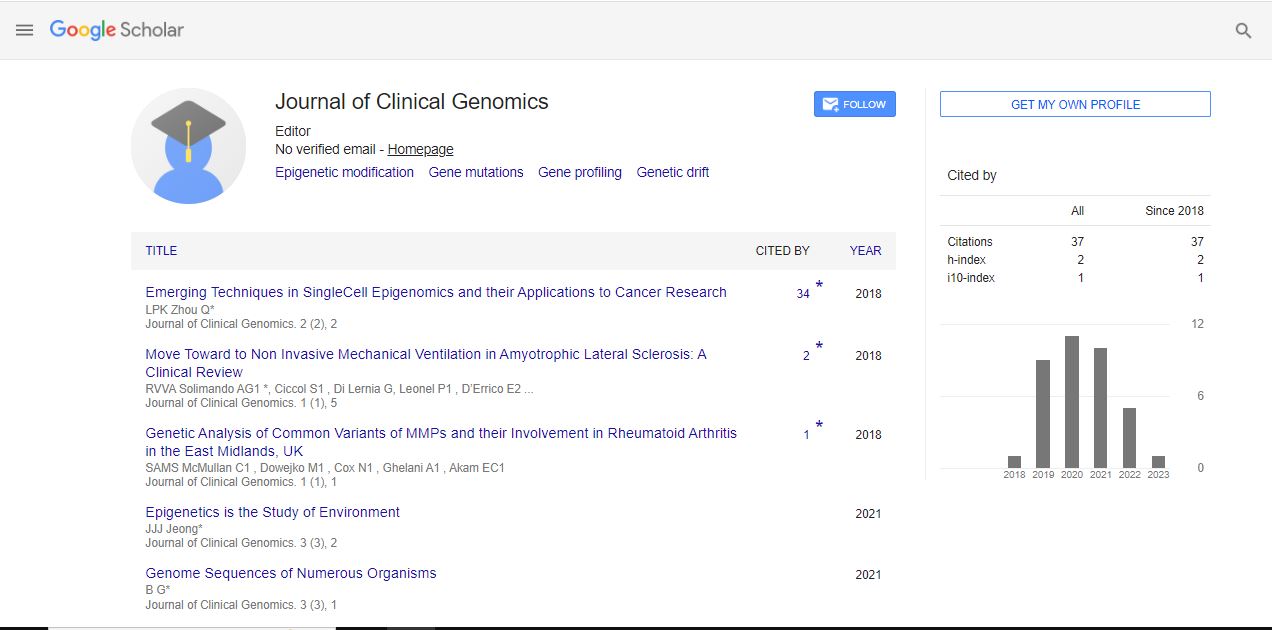Commentary, J Chromatography Res Vol: 4 Issue: 1
A Short Notes on Column Chromatography
Nikoletta*
Department of Organic Chemistry, Budapest University of Technology and Economics, Hungary
*Corresponding Author: Nikoletta Department of Organic Chemistry, Budapest University of Technology and Economics, Hungary E-Mail: nikolettawe@hotmail. com
Received: 09 December, 2021; Accepted: 23 December, 2021; Published: 30 December, 2021
Keywords: Column Chromatography , Mobile phase
Introduction
Column chromatography is a chromatography technique used it to isolate a single synthetic compound is called. The ability of chromatography to separate compounds is based on the difference adsorbent of substances to the adsorbent; compounds start moving through the column at varying rates, enabling them to be separated into fractions. Since many different materials (normal phase, reversed phase, or otherwise) could be used with a wide variety of solvents, the technique is widely applicable. The technique can be applied to scales ranging from micrograms to kilograms. The primary benefit of column chromatography is the relatively inexpensive and degradability of the stationary phase used for the process. The latter protects against cross-contamination and stationary phase degradation caused by recycling. Gravity can be used to move columns in column chromatography, the solvent, or by forcing this same solvent through the column with compressed air, A thin-layer chromatograph can predict how a chemical mixture will behave when cleansed using column chromatography. Prior to actually conducting column chromatography, the isolation is maximized using thin-layer chromatography. Packing a solid applicator into a cylindrical glass tube creates a column. The size would be determined by the amount of compound isolated. To hold the solid phase in place, the tube's set includes a filter, either a cotton or bottle wool plug or glass frit. At the top of the photo, a liquid reservoir can be attached. A section is typically prepared using one of two methods: the dry method or the wet method. The dry process starts with the addition of dry stationary phase granules to the section, followed by the addition of mobile phase, which would be flushed through the section until it becomes soaking soaked, and is never allowed to run dry from in this point on, For the wet process, a sludge of the eluent and the solid phase granules is prepared and carefully poured into the column. The top of a silica should be flat, and it can be shielded with a layer of sand. To progress the biological matter, eluent is slowly added to the column. The solid phase retains the individual components differently and separates them while they run at different speeds through the column with eluent. They elute one at a time at the column's end. The eluent is collected in a series of fragments throughout the chromatography process. Fraction collectors are devices that collect fragments instantly, chromatography’s productivity can be risen by running multiple columns at once Multi-stream collectors have been used in this case. The extractant flow's structure can be monitored, and each portion is analysed for dissolved compounds using analytical chromatography, UV absorption spectra, as well as fluorescence, for example. Colored substances (or fluorescent compounds with aid of a UV lamp) could be seen as having to move bands through glass partition. In column chromatography, the stationary phase or adsorptive is a solid. The most prevalent stationary phase for column chromatography is silica gel, followed by alumina. In the past, lignocellulosic powder was frequently used. To conduct ion exchange chromatography, reversed-phase chromatography (RP), affinity chromatography, or enlarged bed adsorption, a variety of stationary phases are accessible (EBA). The stationary phases are typically ground powders or gels that are micro porous for increased surface area, but while EBA employs a fluidized bed. The solid phase weight as well as the dry weight of the present in the sample mixture which can be decided to apply to the column has a significant ratio. This ratio varies between 20:1 and 100:1 for silica column chromatography.
 Spanish
Spanish  Chinese
Chinese  Russian
Russian  German
German  French
French  Japanese
Japanese  Portuguese
Portuguese  Hindi
Hindi 